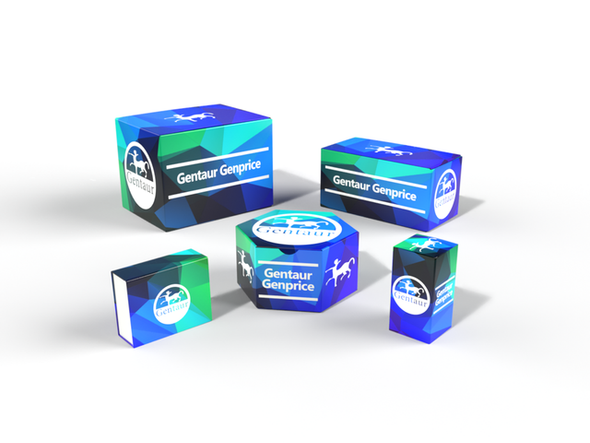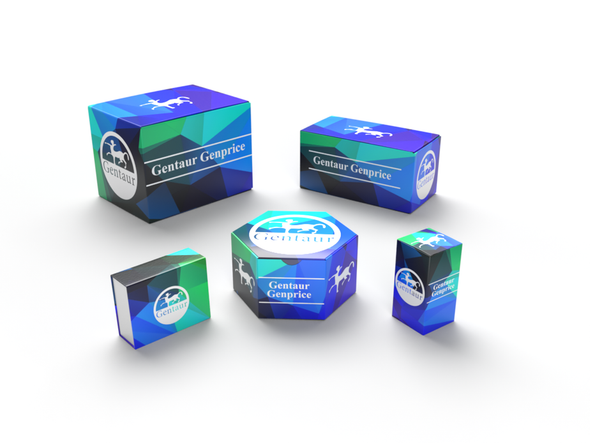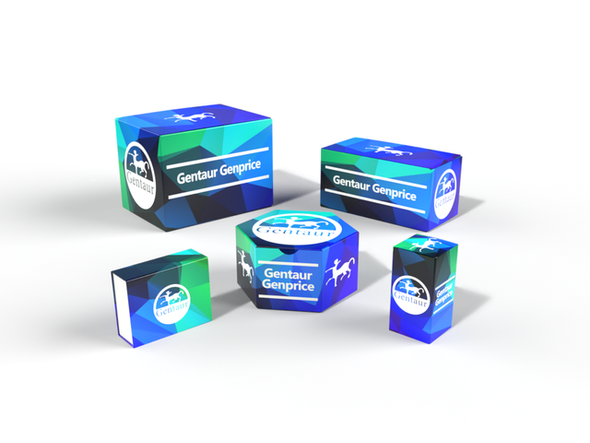749
Rat Protein prune homolog (PRUNE) ELISA Kit | KTE100402
- SKU:
- 749-KTE100402
- Availability:
- Usually ships in 5 working days
Description
Rat Protein prune homolog (PRUNE) ELISA Kit | KTE100402 | Gentaur UK, US & Europe Distribution
Application: This Rat Protein prune homolog (PRUNE) ELISA Kit employs a two-site sandwich ELISA to quantitate PRUNE in samples. An antibody specific for PRUNE has been pre-coated onto a microplate. Standards and samples are pipetted into the wells and anyPRUNE present is bound by the immobilized antibody. After removing any unbound substances, a biotin-conjugated antibody specific for PRUNE is added to the wells. After washing, Streptavidin conjugated Horseradish Peroxidase (HRP) is added to the wells. Following a wash to remove any unbound avidin-enzyme reagent, a substrate solution is added to the wells and color develops in proportion to the amount of PRUNE bound in the initial step. The color development is stopped and the intensity of the color is measured.
Detection Method: Colorimetric
Conjugate: N/A
Sample Type: Cell culture supernatants#Serum#Plasma#Other biological fluids
Assay Type: Multiple steps standard sandwich ELISA assay with a working time of 3-5 hours. It depends on the experience of the operation person.
Kit Component: • Rat Protein prune homolog microplate
• Rat Protein prune homolog standard
• Rat Protein prune homolog detect antibody
• Streptavidin-HRP
• Standard diluent
• Assay buffer
• HRP substrate
• Stop solution
• Wash buffer
• Plate covers
Features & Benefits: Rat Protein prune homolog (PRUNE) ELISA Kit has high sensitivity and excellent specificity for detection of Rat PRUNE. No significant cross-reactivity or interference between Rat PRUNE and analogues was observed.
Calibration Range: Please inquire
Limit Of Detection: Please inquire
Usage Note: • Do not mix components from different kit lots or use reagents beyond the kit expiration date.
• Allow all reagents to warm to room temperature for at least 30 minutes before opening.
• Pre-rinse the pipet tip with reagent, use fresh pipet tips for each sample, standard and reagent to avoid contamination.
• Unused wells must be kept desiccated at 4 °C in the sealed bag provided.
• Mix Thoroughly is very important for the result. It is recommended using low frequency oscillator or slight hand shaking every 10 minutes.
• It is recommended that all samples and standards be assayed in duplicate or triplicate.
Storage Instruction: The unopened kit should be stored at 2 - 8°C. After opening, please store refer to protocols.
Shipping: Gel pack with blue ice.
Precaution The product listed herein is for research use only and is not intended for use in human or clinical diagnosis. Suggested applications of our products are not recommendations to use our products in violation of any patent or as a license. We cannot be responsible for patent infringements or other violations that may occur with the use of this product.
Background: PRUNE, the human homologue of the Drosophila gene, is located in 1q21.3, a region highly amplified in human sarcomas, malignant tumours of mesenchymal origin. Prune protein interacts with the metastasis suppressor nm23-H1, but shows impaired affinity towards the nm23-H1 S120G mutant associated with advanced neuroblastoma. Prune may act as a negative regulator of nm23-H1 activity. PRUNE amplification was generally accompanied by high mRNA and moderate to high protein levels. The sarcoma samples expressed nm23-H1 mostly at low or moderate levels, whereas mRNA and protein levels were moderate to high in breast carcinomas. For the more aggressive sarcoma subtypes, 9/13 patients with PRUNE amplification developed metastases.
Alternative Names: PRUNE; DRES-17; DRES17; HTCD37; Drosophila-related expressed sequence 17; prune
Search name: PRUNE; DRES-17; DRES17; HTCD37; Drosophila-related expressed sequence 17; prune
Tag: PRUNE










